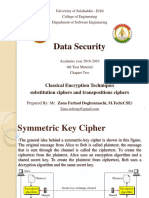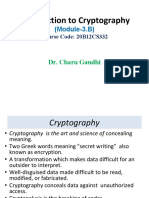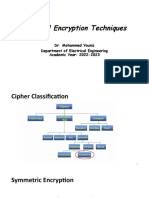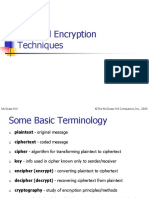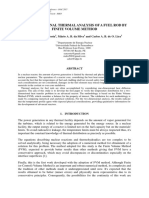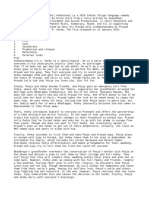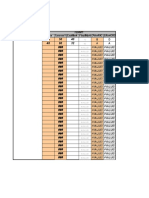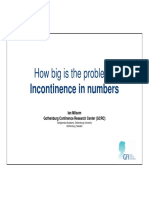0% found this document useful (0 votes)
92 views49 pagesSubstitution Ciphers Overview
This document discusses various types of substitution ciphers including monoalphabetic, polyalphabetic, and multiple letter ciphers. It provides examples of specific ciphers such as the Caesar cipher, affine cipher, Vigenère cipher, and Playfair cipher. It also discusses cryptanalysis techniques like brute force attacks that can be used to decrypt messages encrypted with weak substitution ciphers.
Uploaded by
solomon berhanuCopyright
© © All Rights Reserved
We take content rights seriously. If you suspect this is your content, claim it here.
Available Formats
Download as PPT, PDF, TXT or read online on Scribd
0% found this document useful (0 votes)
92 views49 pagesSubstitution Ciphers Overview
This document discusses various types of substitution ciphers including monoalphabetic, polyalphabetic, and multiple letter ciphers. It provides examples of specific ciphers such as the Caesar cipher, affine cipher, Vigenère cipher, and Playfair cipher. It also discusses cryptanalysis techniques like brute force attacks that can be used to decrypt messages encrypted with weak substitution ciphers.
Uploaded by
solomon berhanuCopyright
© © All Rights Reserved
We take content rights seriously. If you suspect this is your content, claim it here.
Available Formats
Download as PPT, PDF, TXT or read online on Scribd
/ 49

